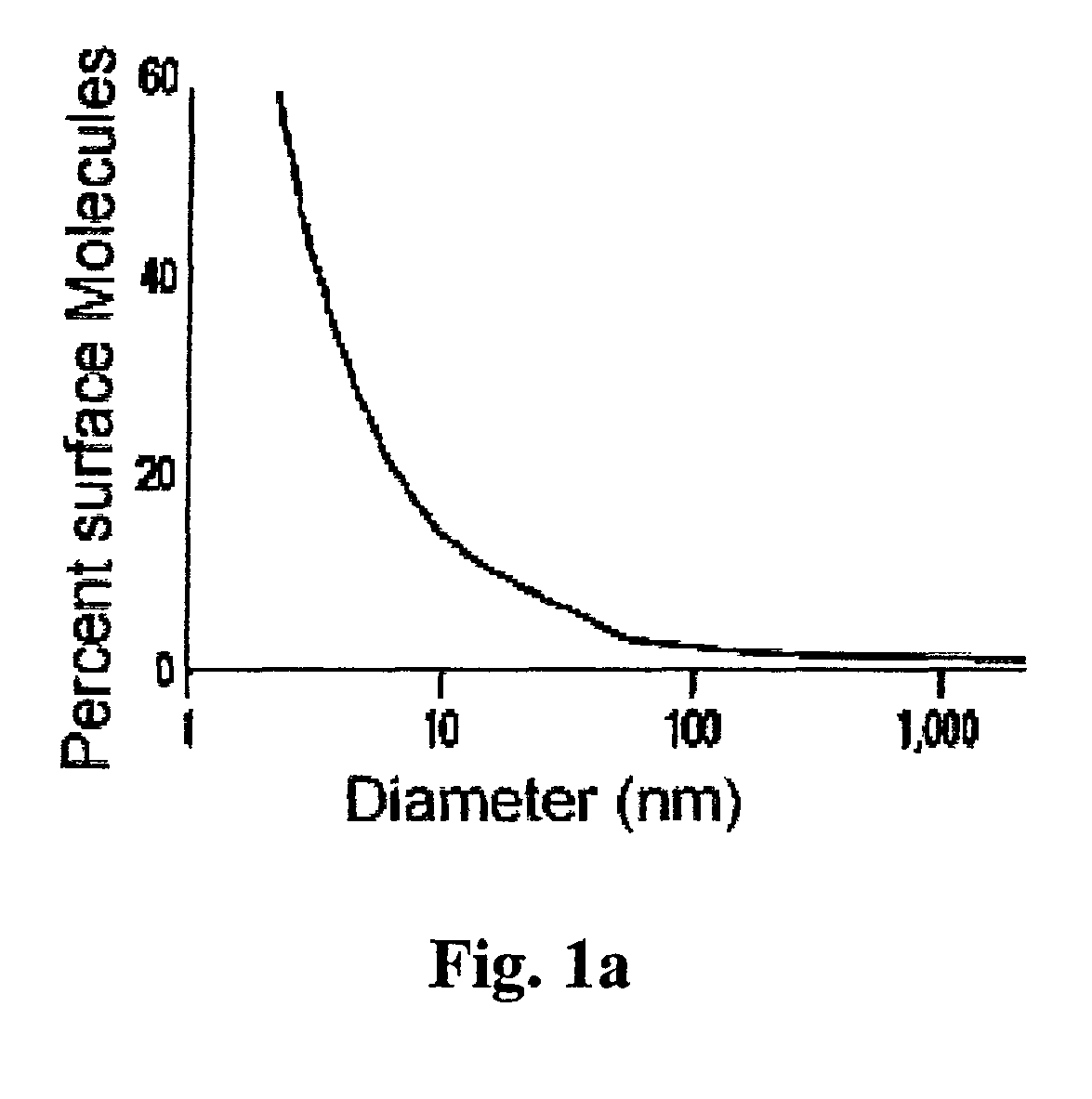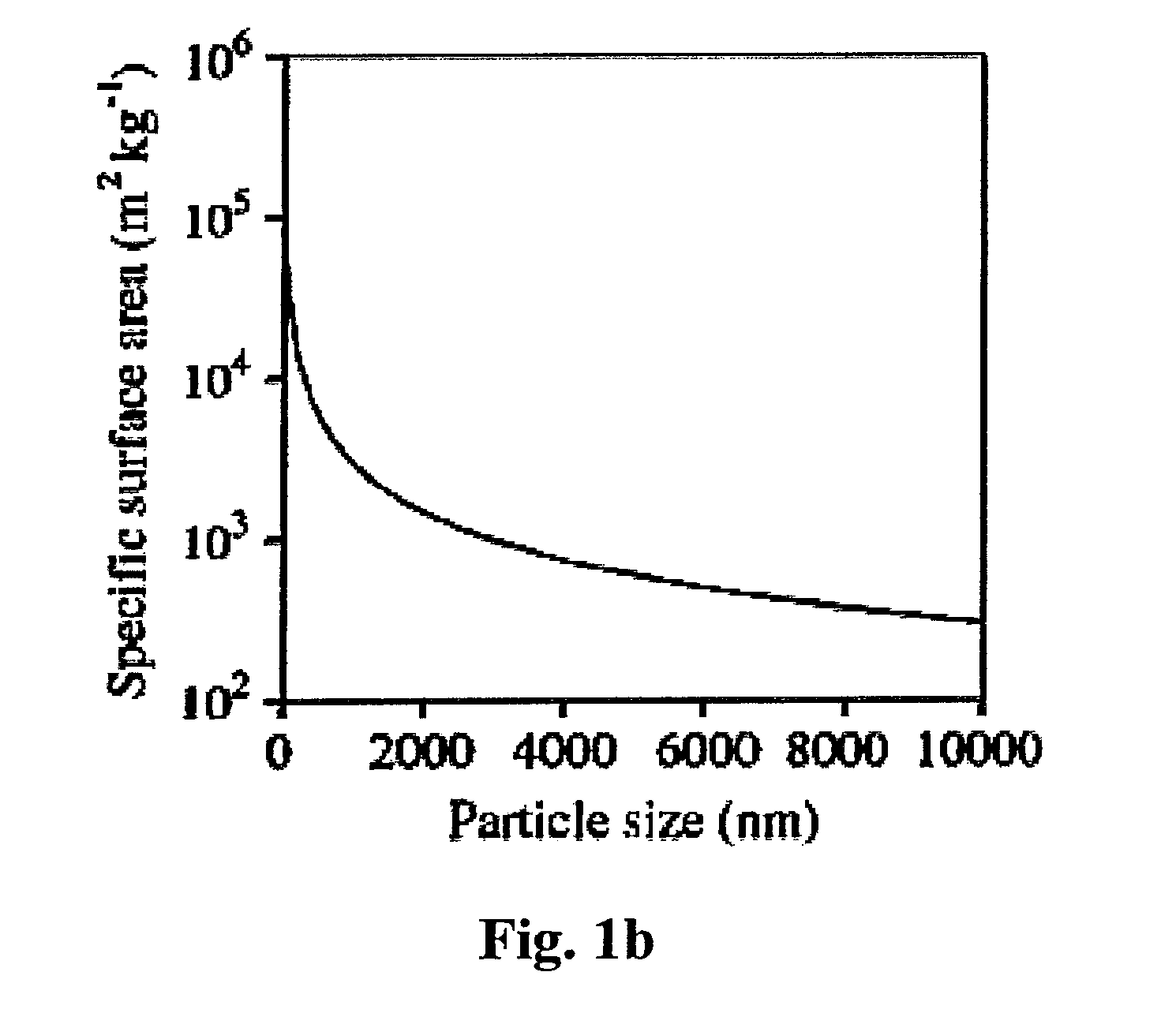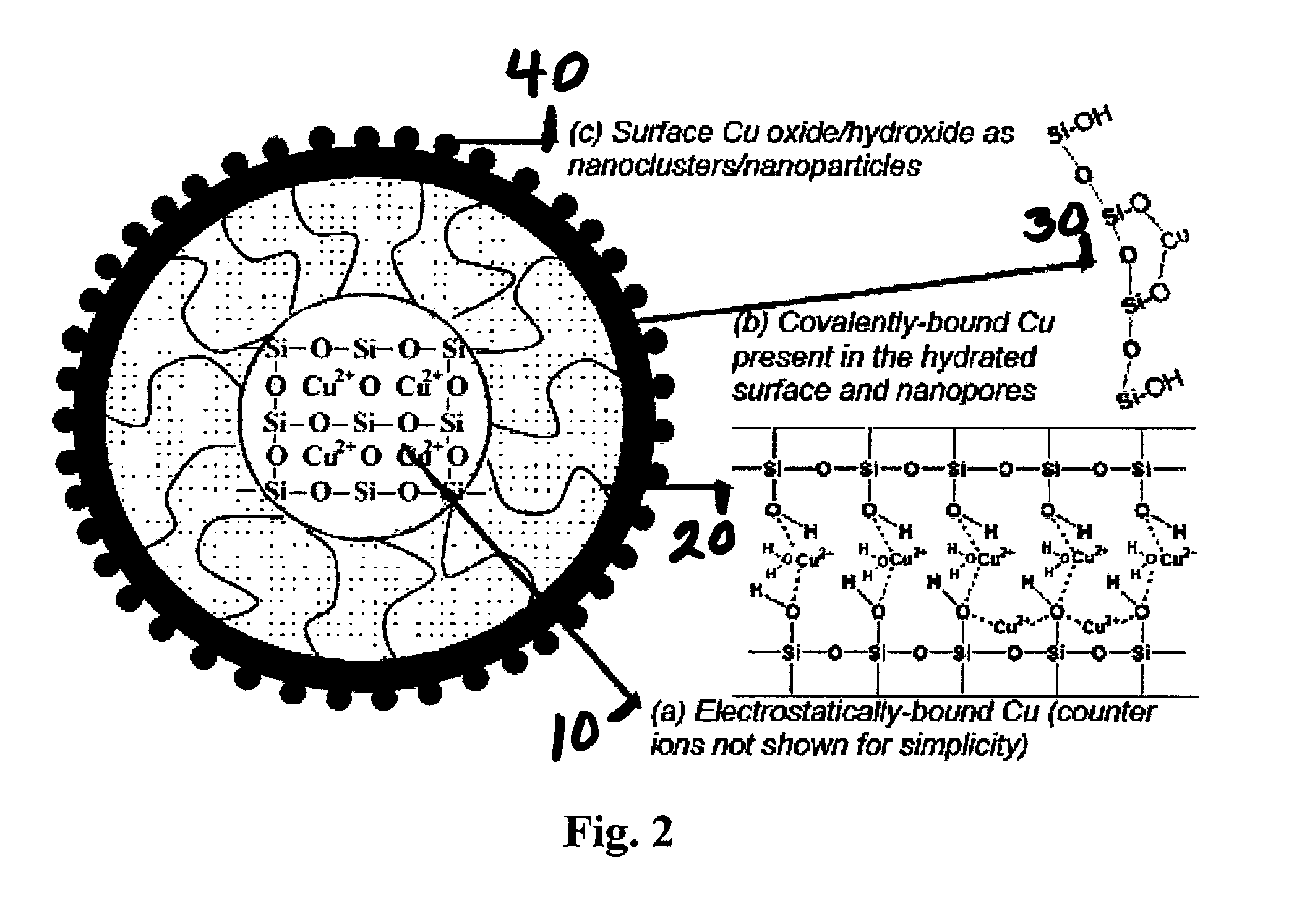Silica-based antibacterial and antifungal nanoformulation
a technology of nanoformulation and antibacterial properties, which is applied in the field ofsilica-based antibacterial and antifungal nanoformulation, can solve the problems of generating highly reactive hydroxyl radicals that readily and efficiently damage biomolecules, thalophyte organisms a lot of dollars of annual crop losses, and reducing the antibacterial effect of b/f release, etc., to achieve the effect of simple, cost-effective fabrication, and improved antibacterial
- Summary
- Abstract
- Description
- Claims
- Application Information
AI Technical Summary
Benefits of technology
Problems solved by technology
Method used
Image
Examples
example 1
Synthesis of CuSiNG
[0111]The synthesis of the copper / silica nanogel (CuSiNG) was carried out at room temperature via one-step acid-catalyzed sol-gel process using tetraethoxysilane (TEOS), water, ethanol, and Cu(II) sulfate. Hydrolysis as shown below in equation 4 and condensation reactions in equations 5 and 6 below resulted in the formation of ultra-small (<10 nm size) Cu loaded silica nanoparticles (CuSiNPs). When maintained in acidic condition for several hours, gelation takes place. FIG. 3 shows formation of CuSiNG where CuSiNPs are interconnected.
(RO)3SiOR+H2O→(RO)3SiOH+ROH (4)
2(RO)3SiOH→(RO)3Si—O—Si(OR)3+H2O (5)
(RO)3SiOH+ROSi(OR)3→(RO)3Si—O—Si(OR)3+ROH (6)
[0112]The overall synthesis process will involve two simple steps: First, the addition of Cu(II) salts to the acidic reaction medium in the beginning of nanoparticle synthesis and second, addition of a neutralizing agent, such as, sodium hydroxide (NaOH) after the synthesis to adjust the pH to 7.0. The acid reaction mediu...
example 2
Binding of Copper to Silica Nanogel
[0118]The binding of Cu to SiNG was clearly evident from the blue color appearance of the product shown in FIG. 4a. The product is water-dispersible. Upon centrifugation, a blue residue was obtained and the supernatant was clear as shown in FIG. 4b. In contrast, silica NG when prepared in the absence of Cu ions showed characteristic white color of silica.
[0119]To evaluate how well Cu was bound to silica NG, CuSiNG was treated with ethylenediamine tetraacetic acid (EDTA), a strong chelator for Cu ions. Within several minutes, a water-soluble Cu-EDTA complex formed as shown in FIG. 4c. Upon centrifugation, we obtained white color residue of silica NG and blue color supernatant of Cu-EDTA complex as shown in FIG. 4d. These results clearly demonstrate that the binding of Cu to silica is not as strong as in Cu-EDTA complex. Therefore, the loaded Cu could be slowly released in its ionic form from the CuSiNG.
CuSiNG Product Characterization.
[0120]Samples w...
PUM
 Login to View More
Login to View More Abstract
Description
Claims
Application Information
 Login to View More
Login to View More - R&D
- Intellectual Property
- Life Sciences
- Materials
- Tech Scout
- Unparalleled Data Quality
- Higher Quality Content
- 60% Fewer Hallucinations
Browse by: Latest US Patents, China's latest patents, Technical Efficacy Thesaurus, Application Domain, Technology Topic, Popular Technical Reports.
© 2025 PatSnap. All rights reserved.Legal|Privacy policy|Modern Slavery Act Transparency Statement|Sitemap|About US| Contact US: help@patsnap.com



